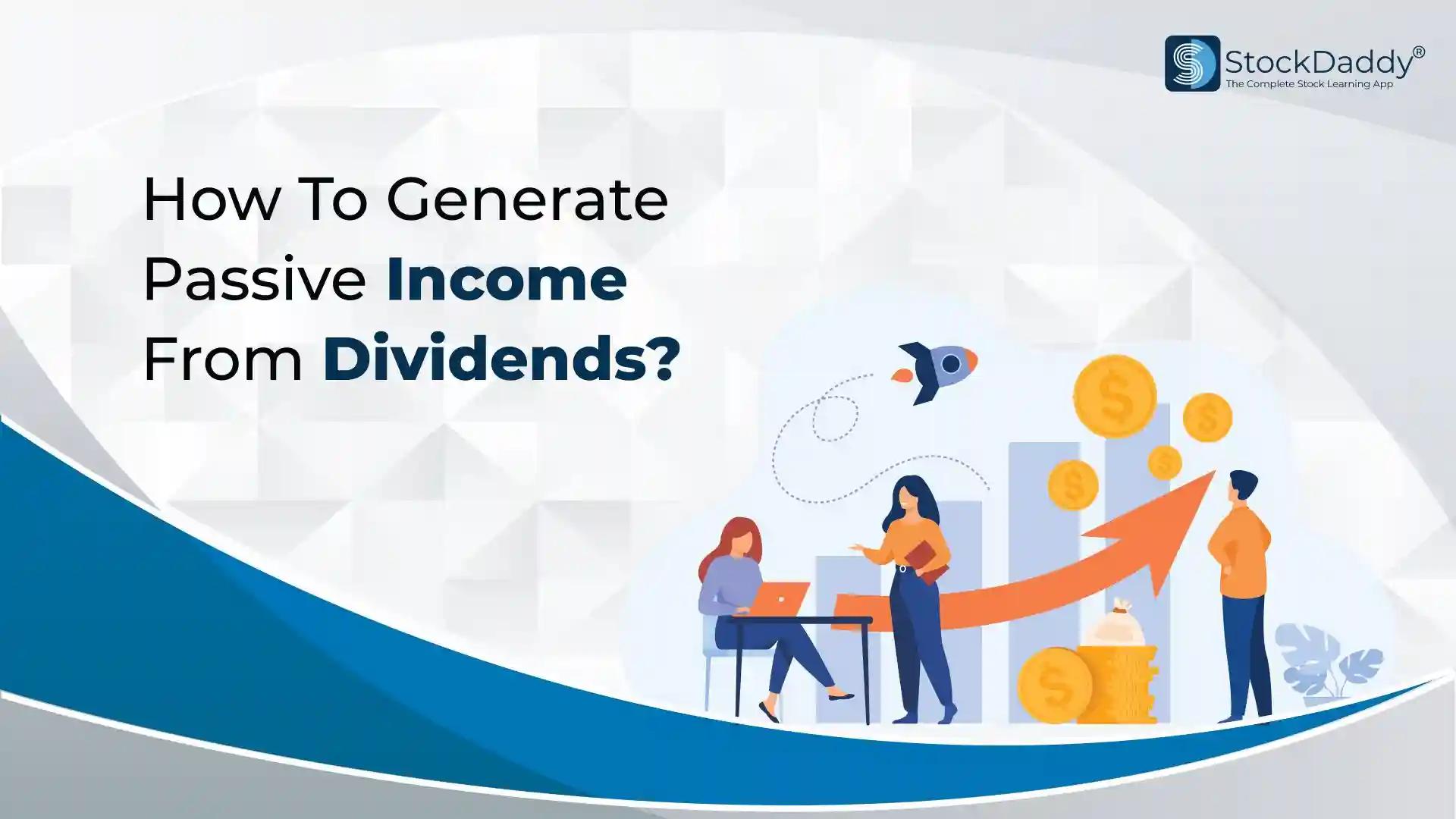Blog >
How to generate passive income from dividends?
How to generate passive income from dividends?

Do you know you can generate a regular passive income from investing?
You can make money by investing in the stocks of a company in two ways.
One is very common because everyone is already aware of it, which is when stock prices increase, you sell it and make a profit from it. But there is another way which is dividend investing, that you will discover in this write-up.
If you intend to earn a profit from dividend investing, you must locate companies that are likely to increase their dividends year after year. Investing in dividends is one of the most effective ways to generate passive income or even regular income.
Most people who have proper knowledge of stocks and those who know how to invest in them, can make a reliable source of income from dividend investing.
What is Dividend?
Dividends refer to the distribution of profits among company shareholders. A profitable company has two options: it can either use the entire profit to expand its business or, it can distribute a portion of the profit to its shareholders.
Let’s understand with an example how dividends can be earned from companies.
Suppose,
In the year of 2022, the Company A made a profit of Rs 100 Crores and decided to pay a Rs 5 dividend per share. The rest of the profit will be utilized for the company’s betterment.
And if you hold 1000 shares of Company A, then you will get 1000 x 5= Rs 5000 as a dividend.
Which companies provide the dividends?
Profitable businesses are more likely to pay dividends, whereas startups are less inclined to do so. Major companies that are in a mature state have a high dividend yield.
Every stock does not give dividends. There is a possibility that a company that has been paying dividends for some time may cease to do so. In contrast, a company that has never paid dividends can now begin this practice. It is entirely determined by the company's higher authorities.
Startup companies typically use their profits to expand their businesses to earn more profits in the future. At the same time, it benefits investors too because as the company grows, the funds he/she invested can also be converted into a higher digit. It benefits its shareholders in two-ways-
When the prices of the shares soared
Since, the value of the dividend will be higher in the future, the company decided to provide dividends accordingly.
Who decides the dividend?
The directors of the company decide whether a dividend will be declared or not. If they are sure that they can accelerate business growth, dividends will not be distributed among shareholders and vice-versa.
How can we get dividends?
We mentioned above that only profitable and mature companies pay dividends. So it is clear that we have to hold only shares whose company is running into profits and already stable. A company may pay a dividend as many times as it wants in a year.
But there are few important key points to keep in mind while applying for a dividend. There are pre-determined dates on which dividend distribution is decided.
- Record Date- It refers to the date by which shareholders must be listed on the company's books in order to be eligible for the dividend and is often determined by the company's board of directors. In case your name is missing from the list on the record day, you are not eligible for getting dividends.
- Ex-dividend Date- An ex-dividend date is defined by rules of the stock exchange and it is usually one business day before the record date. When a stock is purchased on its ex-dividend date rather than before it, the seller will receive the recently declared dividend for that stock. On the ex-dividend date, a stock's price can drop by the amount of the declared dividend.
What is the difference between Record Date and Ex-dividend Date?
Let’s understand the difference between Record Date and Ex-dividend Date with the help of an example-
Consider-
- Declaration Date- April 08
- Ex-dividend Date- April 14
- Record Date- April 15
- Payable Date- May 9
Let's say that on Friday, April 8, Company A declares a dividend for its shareholders. The company's board then announces a record date of Friday, April 15. Shareholders of record on that date will be eligible to receive the dividend.
Typically, the ex-dividend date would fall one business day before the record date, or, on Thursday, April 14. An investor who purchases shares on or before Wednesday, April 13 will be a shareholder of record on April 15 and will receive the dividend to be paid on May 9. An investor who purchases shares on or after April 14 will not be entitled to the dividend.
How to pick dividend stocks?
Your research plays an imperative role when it comes to selecting the highest dividend stocks that provide higher dividend yield to you. Browse through some authentic stock investing websites to find a list of the stocks of big and profitable companies. However, only these sites will provide you with reliable data since they make enormous profits.
Then you have to sort the stocks in descending order of dividend yield, so you can determine which stocks work best for you. After all of this, you have to do a company analysis including income growth, industry growth, dividend history in the past few years, and a lot of things that give a clear perspective of the stocks.
Secondly, you can buy a portfolio because some of the other companies will definitely provide a dividend at some or the other time which is the most effective way to make money from dividend investing.
How passive income is generated from dividend investing?
A dividend is a passive form of income that allows you to receive dividends by owning a company's stock. When companies declare dividends that means some part of profit or all of it is distributed among shareholders. The remaining profit at the end is distributed in the form of dividends. You just have to be a shareholder of any profitable company.
For generating regular income from dividends, you will have to choose those stocks that have been regularly and consistently declare dividends every year.
How are dividends taxed?
Whenever dividends are declared, the company deducts 10% TDS. No matter how much dividend income you receive, 10% of it will be considered taxable income. Rest of the amount is considered other income and added to your tax slab. After the government takes away 10%, we need to pay taxes based on our income tax bracket.
If you are looking for learning fundamental and technical analysis of the stock market then you can refer to the StockDaddy- The Stock Learning App.
Open DEMAT Account with Stockdaddy

